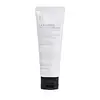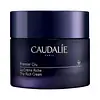What's inside
What's inside
 Key Ingredients
Key Ingredients

 Benefits
Benefits

 Concerns
Concerns

 Ingredients Side-by-side
Ingredients Side-by-side

Water
Skin ConditioningPropanediol
SolventGlycerin
HumectantCaprylic/Capric Triglyceride
MaskingMethylpropanediol
SolventHelianthus Annuus Seed Oil
EmollientBis-Diglyceryl Polyacyladipate-2
EmollientOlea Europaea Fruit Oil
MaskingPolyglyceryl-3 Methylglucose Distearate
EmulsifyingCeramide NP
Skin ConditioningGlyceryl Stearate
EmollientGlyceryl Stearate Citrate
EmollientButylene Glycol
HumectantTrehalose
HumectantButyrospermum Parkii Butter
Skin ConditioningJojoba Oil/Macadamia Seed Oil Esters
Skin ConditioningCarbomer
Emulsion StabilisingAllantoin
Skin ConditioningArginine
MaskingHydroxyethyl Acrylate/Sodium Acryloyldimethyl Taurate Copolymer
Emulsion Stabilising1,2-Hexanediol
Skin ConditioningTocopherol
AntioxidantPentylene Glycol
Skin ConditioningPanthenol
Skin ConditioningSqualene
EmollientHydrogenated Lecithin
EmulsifyingCaprylyl Glycol
EmollientCitrus Paradisi Fruit Extract
Skin ConditioningCetearyl Alcohol
EmollientStearic Acid
CleansingEriobotrya Japonica Leaf Extract
Skin ConditioningSodium Phytate
Phytosteryl Macadamiate
Skin ConditioningAcorus Calamus Root Extract
PerfumingPerilla Ocymoides Leaf Extract
TonicSchisandra Chinensis Fruit Extract
Skin ConditioningSucrose
HumectantPhytosterols
Skin ConditioningCitrus Aurantium Amara Flower Oil
MaskingCynanchum Atratum Extract
Skin ConditioningMineral Salts
Skin ConditioningCeramide Ns
Skin ConditioningCholesterol
EmollientPhytosphingosine
Skin ConditioningCeramide As
Skin ConditioningCeramide AP
Skin ConditioningCeramide EOP
Skin ConditioningWater, Propanediol, Glycerin, Caprylic/Capric Triglyceride, Methylpropanediol, Helianthus Annuus Seed Oil, Bis-Diglyceryl Polyacyladipate-2, Olea Europaea Fruit Oil, Polyglyceryl-3 Methylglucose Distearate, Ceramide NP, Glyceryl Stearate, Glyceryl Stearate Citrate, Butylene Glycol, Trehalose, Butyrospermum Parkii Butter, Jojoba Oil/Macadamia Seed Oil Esters, Carbomer, Allantoin, Arginine, Hydroxyethyl Acrylate/Sodium Acryloyldimethyl Taurate Copolymer, 1,2-Hexanediol, Tocopherol, Pentylene Glycol, Panthenol, Squalene, Hydrogenated Lecithin, Caprylyl Glycol, Citrus Paradisi Fruit Extract, Cetearyl Alcohol, Stearic Acid, Eriobotrya Japonica Leaf Extract, Sodium Phytate, Phytosteryl Macadamiate, Acorus Calamus Root Extract, Perilla Ocymoides Leaf Extract, Schisandra Chinensis Fruit Extract, Sucrose, Phytosterols, Citrus Aurantium Amara Flower Oil, Cynanchum Atratum Extract, Mineral Salts, Ceramide Ns, Cholesterol, Phytosphingosine, Ceramide As, Ceramide AP, Ceramide EOP
Water
Skin ConditioningGlycerin
HumectantCaprylic/Capric Triglyceride
MaskingVitis Vinifera Seed Oil
EmollientHydrogenated Ethylhexyl Olivate
EmollientButyrospermum Parkii Butter Extract
Skin ConditioningCetearyl Alcohol
EmollientButylene Glycol
HumectantCetearyl Glucoside
EmulsifyingPropanediol
SolventPalmitoyl Grapevine Shoot Extract
AntioxidantPalmitoyl Grape Seed Extract
Skin ConditioningHydrogenated Olive Oil Unsaponifiables
EmollientPentaerythrityl Distearate
EmulsifyingPotassium Cetyl Phosphate
EmulsifyingCarbomer
Emulsion StabilisingCaprylyl Glycol
EmollientCeramide NP
Skin ConditioningXanthan Gum
EmulsifyingCI 77891
Cosmetic ColorantHydrolyzed Hyaluronic Acid
HumectantMagnolia Grandiflora Bark Extract
AntimicrobialPotassium Sorbate
PreservativeTocopherol
AntioxidantHelianthus Annuus Seed Oil
EmollientAdenosine
Skin ConditioningSodium Hydroxide
BufferingSodium Phytate
Geraniol
PerfumingLinalool
PerfumingCI 77491
Cosmetic ColorantPaeonia Lactiflora Root Extract
Skin ConditioningCI 77492
Cosmetic ColorantSodium Citrate
BufferingParfum
MaskingCitronellol
PerfumingWater, Glycerin, Caprylic/Capric Triglyceride, Vitis Vinifera Seed Oil, Hydrogenated Ethylhexyl Olivate, Butyrospermum Parkii Butter Extract, Cetearyl Alcohol, Butylene Glycol, Cetearyl Glucoside, Propanediol, Palmitoyl Grapevine Shoot Extract, Palmitoyl Grape Seed Extract, Hydrogenated Olive Oil Unsaponifiables, Pentaerythrityl Distearate, Potassium Cetyl Phosphate, Carbomer, Caprylyl Glycol, Ceramide NP, Xanthan Gum, CI 77891, Hydrolyzed Hyaluronic Acid, Magnolia Grandiflora Bark Extract, Potassium Sorbate, Tocopherol, Helianthus Annuus Seed Oil, Adenosine, Sodium Hydroxide, Sodium Phytate, Geraniol, Linalool, CI 77491, Paeonia Lactiflora Root Extract, CI 77492, Sodium Citrate, Parfum, Citronellol
 Reviews
Reviews

Ingredients Explained
These ingredients are found in both products.
Ingredients higher up in an ingredient list are typically present in a larger amount.
Butylene Glycol (or BG) is used within cosmetic products for a few different reasons:
Overall, Butylene Glycol is a safe and well-rounded ingredient that works well with other ingredients.
Though this ingredient works well with most skin types, some people with sensitive skin may experience a reaction such as allergic rashes, closed comedones, or itchiness.
Learn more about Butylene GlycolThis ingredient is an emollient, solvent, and texture enhancer. It is considered a skin-softener by helping the skin prevent moisture loss.
It helps thicken a product's formula and makes it easier to spread by dissolving clumping compounds.
Caprylic Triglyceride is made by combining glycerin with coconut oil, forming a clear liquid.
While there is an assumption Caprylic Triglyceride can clog pores due to it being derived from coconut oil, there is no research supporting this.
Learn more about Caprylic/Capric TriglycerideCaprylyl Glycol is a humectant and emollient, meaning it attracts and preserves moisture.
It is a common ingredient in many products, especially those designed to hydrate skin. The primary benefits are retaining moisture, skin softening, and promoting a healthy skin barrier.
Though Caprylyl Glycol is an alcohol derived from fatty acids, it is not the kind that can dry out skin.
This ingredient is also used as a preservative to extend the life of products. It has slight antimicrobial properties.
Learn more about Caprylyl GlycolCarbomer is a polymer of acrylic acid. Its main role is to create a gel consistency.
A high amount of carbomer can cause pilling or balling up of products. Don't worry, most products contain 1% or less of carbomer.
Ceramide NP is a type of ceramide and formally known as ceramide 3.
Ceramides are intercellular lipids naturally found in our skin that bonds dead skin cells together to create a barrier. They are known for their ability to hold water and thus are a great ingredient for dry skin.
Ceramides are an important building block for our skin barrier. A stronger barrier helps the skin look more firm and hydrated. By bolstering the skin ceramides act as a barrier against irritating ingredients. This can help with inflammation as well.
If you would like to eat ceramides, sweet potatoes contain a small amount.
Read more about other common types of ceramides here:
Ceramide AP
Ceramide EOP
Cetearyl alcohol is a mixture of two fatty alcohols: cetyl alcohol and stearyl alcohol. It is mainly used as an emulsifier. Emulsifiers help prevent the separation of oils and products. Due to its composition, it can also be used to thicken a product or help create foam.
Cetearyl alcohol is an emollient. Emollients help soothe and hydrate the skin by trapping moisture.
Studies show Cetearyl alcohol is non-toxic and non-irritating. The FDA allows products labeled "alcohol-free" to have fatty alcohols.
This ingredient is usually derived from plant oils such as palm, vegetable, or coconut oils. There is debate on whether this ingredient will cause acne.
Due to the fatty acid base, this ingredient may not be Malassezia folliculitis safe.
Learn more about Cetearyl AlcoholGlycerin is already naturally found in your skin. It helps moisturize and protect your skin.
A study from 2016 found glycerin to be more effective as a humectant than AHAs and hyaluronic acid.
As a humectant, it helps the skin stay hydrated by pulling moisture to your skin. The low molecular weight of glycerin allows it to pull moisture into the deeper layers of your skin.
Hydrated skin improves your skin barrier; Your skin barrier helps protect against irritants and bacteria.
Glycerin has also been found to have antimicrobial and antiviral properties. Due to these properties, glycerin is often used in wound and burn treatments.
In cosmetics, glycerin is usually derived from plants such as soybean or palm. However, it can also be sourced from animals, such as tallow or animal fat.
This ingredient is organic, colorless, odorless, and non-toxic.
Glycerin is the name for this ingredient in American English. British English uses Glycerol/Glycerine.
Learn more about GlycerinHelianthus Annuus Seed Oil is the oil derived from the seeds of a Sunflower. Sunflower seed oil is non-fragrant. It is an emollient, meaning it helps to soften the skin.
Sunflower seed oil contains many fatty acids. The fatty acids found in sunflower seeds include (from highest amount to least): linoleic acid, myristic acid, palmitic acid, stearic acid, arachidic acid, oleic acid, and linolenic acid.
These fatty acids help the skin create ceramides. Ceramides play a role in repairing the skin barrier.
Helianthus Annuus Seed Oil helps moisturize the skin. This in turn helps the skin look more rejuvenated and smoother.
Sunflowers are rich in vitamin E.
Historians believe Indigenous cultures of North America domesticated sunflowers before corn. Thus they relied on sunflower oil for a variety of uses. One such use is moisturizing skin and hair.
Sunflower seed oil may not be fungal acne safe. We recommend speaking with a professional if you have any concerns.
Learn more about Helianthus Annuus Seed OilPropanediol is an all-star ingredient. It softens, hydrates, and smooths the skin.
It’s often used to:
Propanediol is not likely to cause sensitivity and considered safe to use. It is derived from corn or petroleum with a clear color and no scent.
Learn more about PropanediolSodium Phytate is the synthetic salt form of phytic acid. Phytic acid is an antioxidant and can be found in plant seeds.
Sodium Phytate is a chelating agent. Chelating agents help prevent metals from binding to water. This helps stabilize the ingredients and the product.
Tocopherol (also known as Vitamin E) is a common antioxidant used to help protect the skin from free-radicals and strengthen the skin barrier. It's also fat soluble - this means our skin is great at absorbing it.
Vitamin E also helps keep your natural skin lipids healthy. Your lipid skin barrier naturally consists of lipids, ceramides, and fatty acids. Vitamin E offers extra protection for your skin’s lipid barrier, keeping your skin healthy and nourished.
Another benefit is a bit of UV protection. Vitamin E helps reduce the damage caused by UVB rays. (It should not replace your sunscreen). Combining it with Vitamin C can decrease sunburned cells and hyperpigmentation after UV exposure.
You might have noticed Vitamin E + C often paired together. This is because it is great at stabilizing Vitamin C. Using the two together helps increase the effectiveness of both ingredients.
There are often claims that Vitamin E can reduce/prevent scarring, but these claims haven't been confirmed by scientific research.
Learn more about TocopherolWater. It's the most common cosmetic ingredient of all. You'll usually see it at the top of ingredient lists, meaning that it makes up the largest part of the product.
So why is it so popular? Water most often acts as a solvent - this means that it helps dissolve other ingredients into the formulation.
You'll also recognize water as that liquid we all need to stay alive. If you see this, drink a glass of water. Stay hydrated!
Learn more about Water